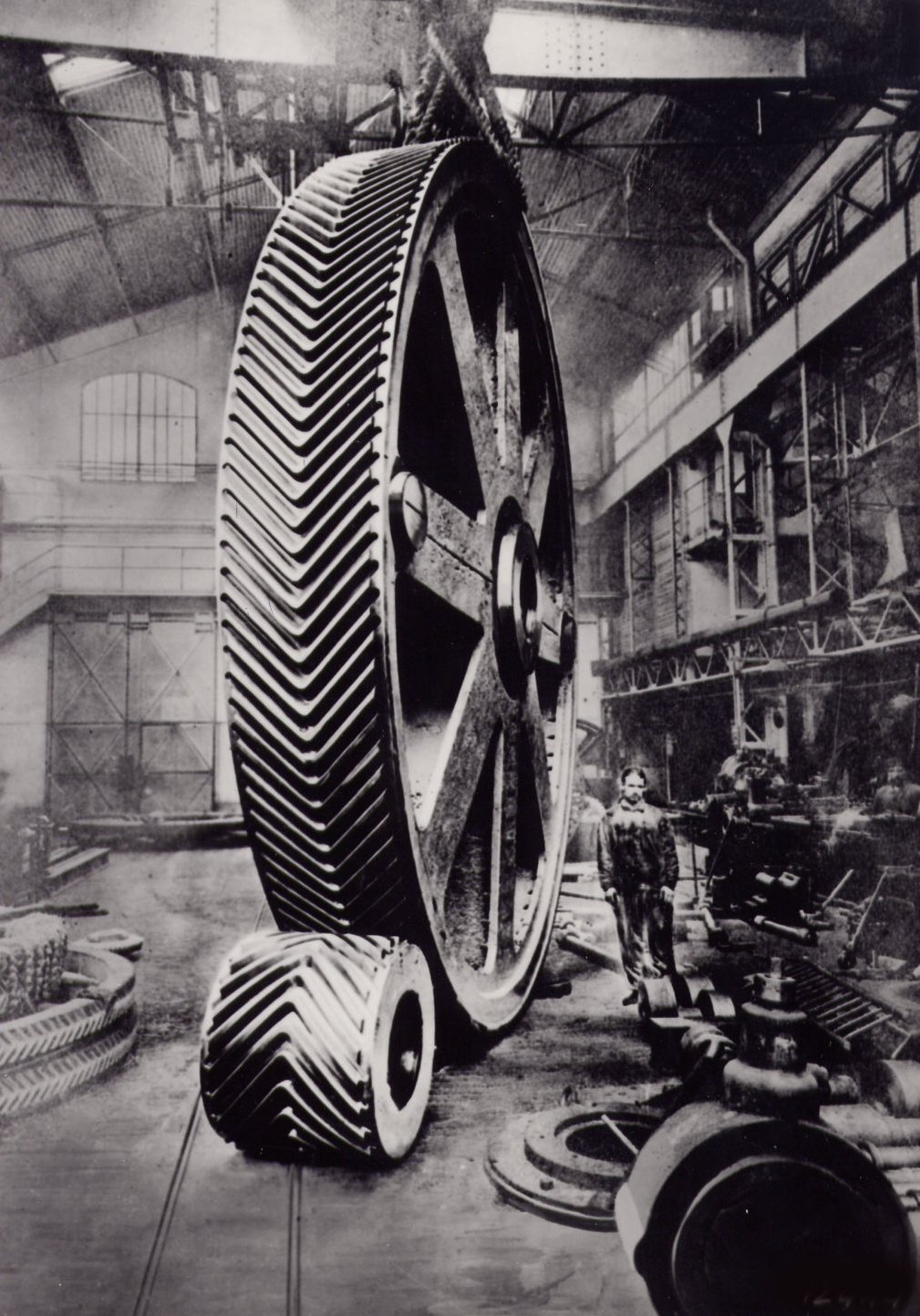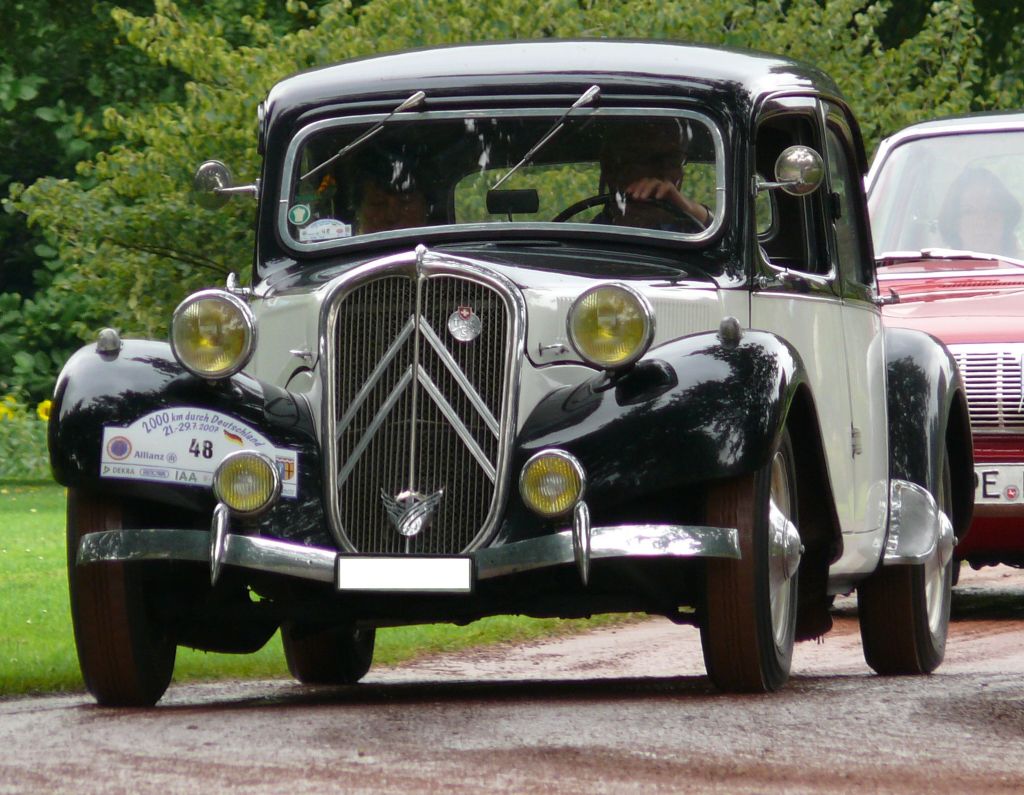|
Sensaud De Lavaud
The Dimitri Sensaud de Lavaud was a French automobile manufactured between 1926 and 1928. An unusual car, made in Paris by M. Dimitri Sensaud de Lavaud, a Brazilian, it had an automatic transmission. The chassis was cast alloy, and it was powered by a steam-cooled 5475 cc six-cylinder engine of American origin. Few were built. The automatic transmission did not select between several gears - instead, it relied solely on the converter's torque multiplication (like GM's much later Dynaflow). André Citroën had intended to use a gearbox based on Sensaud de Lavaud's principles in his 1934-launched Citroën Traction Avant 7A, but it proved impossible for his engineers to make the car's 1300cc engine - coupled with Sensaud de Lavaud's invention - accelerate the vehicle and maintain acceptable speeds uphill, so the 7A appeared with a conventional 3-speed unit. References David Burgess Wise, ''The New Illustrated Encyclopedia of Automobiles''. Bibliography * CERF, Alain. ''Dimitri Sens ... [...More Info...] [...Related Items...] OR: [Wikipedia] [Google] [Baidu] |
Automobile
A car or automobile is a motor vehicle with Wheel, wheels. Most definitions of ''cars'' say that they run primarily on roads, Car seat, seat one to eight people, have four wheels, and mainly transport private transport#Personal transport, people instead of cargo, goods. The year 1886 is regarded as the birth year of the car, when German inventor Carl Benz patented his Benz Patent-Motorwagen. Cars became widely available during the 20th century. One of the first cars affordable by the masses was the 1908 Ford Model T, Model T, an American car manufactured by the Ford Motor Company. Cars were rapidly adopted in the US, where they replaced Draft animal, animal-drawn carriages and carts. In Europe and other parts of the world, demand for automobiles did not increase until after World War II. The car is considered an essential part of the Developed country, developed economy. Cars have controls for driving, parking, passenger comfort, and a variety of lights. Over the decades, a ... [...More Info...] [...Related Items...] OR: [Wikipedia] [Google] [Baidu] |
Paris
Paris () is the capital and most populous city of France, with an estimated population of 2,165,423 residents in 2019 in an area of more than 105 km² (41 sq mi), making it the 30th most densely populated city in the world in 2020. Since the 17th century, Paris has been one of the world's major centres of finance, diplomacy, commerce, fashion, gastronomy, and science. For its leading role in the arts and sciences, as well as its very early system of street lighting, in the 19th century it became known as "the City of Light". Like London, prior to the Second World War, it was also sometimes called the capital of the world. The City of Paris is the centre of the Île-de-France region, or Paris Region, with an estimated population of 12,262,544 in 2019, or about 19% of the population of France, making the region France's primate city. The Paris Region had a GDP of €739 billion ($743 billion) in 2019, which is the highest in Europe. According to the Economist Intelli ... [...More Info...] [...Related Items...] OR: [Wikipedia] [Google] [Baidu] |
Automatic Transmission
An automatic transmission (sometimes abbreviated to auto or AT) is a multi-speed transmission used in internal combustion engine-based motor vehicles that does not require any input from the driver to change forward gears under normal driving conditions. It typically includes a transmission, axle, and differential in one integrated assembly, thus technically becoming a transaxle. The most common type of automatic transmission is the hydraulic automatic, which uses a planetary gearset, hydraulic controls, and a torque converter. Other types of automatic transmissions include continuously variable transmissions (CVT), automated manual transmissions (AMT), and dual-clutch transmissions (DCT). An electronic automatic transmission (EAT) may also be called an electronically controlled transmission (ECT), or electronic automatic transaxle (EATX). A hydraulic automatic transmission may also colloquially called a " slushbox" or simply a "torque converter", although the latter term c ... [...More Info...] [...Related Items...] OR: [Wikipedia] [Google] [Baidu] |
Chassis
A chassis (, ; plural ''chassis'' from French châssis ) is the load-bearing framework of an artificial object, which structurally supports the object in its construction and function. An example of a chassis is a vehicle frame, the underpart of a motor vehicle, on which the body is mounted; if the running gear such as wheels and transmission, and sometimes even the driver's seat, are included, then the assembly is described as a rolling chassis. Examples of use Vehicles In the case of vehicles, the term ''rolling chassis'' means the frame plus the "running gear" like engine, transmission, drive shaft, differential and suspension. An underbody (sometimes referred to as "coachwork"), which is usually not necessary for integrity of the structure, is built on the chassis to complete the vehicle. For commercial vehicles, a rolling chassis consists of an assembly of all the essential parts of a truck without the body to be ready for operation on the road. A car chassis wi ... [...More Info...] [...Related Items...] OR: [Wikipedia] [Google] [Baidu] |
Engine
An engine or motor is a machine designed to convert one or more forms of energy into mechanical energy. Available energy sources include potential energy (e.g. energy of the Earth's gravitational field as exploited in hydroelectric power generation), heat energy (e.g. geothermal), chemical energy, electric potential and nuclear energy (from nuclear fission or nuclear fusion). Many of these processes generate heat as an intermediate energy form, so heat engines have special importance. Some natural processes, such as atmospheric convection cells convert environmental heat into motion (e.g. in the form of rising air currents). Mechanical energy is of particular importance in transportation, but also plays a role in many industrial processes such as cutting, grinding, crushing, and mixing. Mechanical heat engines convert heat into work via various thermodynamic processes. The internal combustion engine is perhaps the most common example of a mechanical heat engine, in which he ... [...More Info...] [...Related Items...] OR: [Wikipedia] [Google] [Baidu] |
United States
The United States of America (U.S.A. or USA), commonly known as the United States (U.S. or US) or America, is a country primarily located in North America. It consists of 50 states, a federal district, five major unincorporated territories, nine Minor Outlying Islands, and 326 Indian reservations. The United States is also in free association with three Pacific Island sovereign states: the Federated States of Micronesia, the Marshall Islands, and the Republic of Palau. It is the world's third-largest country by both land and total area. It shares land borders with Canada to its north and with Mexico to its south and has maritime borders with the Bahamas, Cuba, Russia, and other nations. With a population of over 333 million, it is the most populous country in the Americas and the third most populous in the world. The national capital of the United States is Washington, D.C. and its most populous city and principal financial center is New York City. Paleo-Americ ... [...More Info...] [...Related Items...] OR: [Wikipedia] [Google] [Baidu] |
Dynaflow
Dynaflow was the trademarked name for a type of automatic transmission developed and built by General Motors Buick Motor Division from late 1947 to mid-1963. The Dynaflow, which was introduced for the 1948 model year only as an option on Roadmaster models, received some severe early testing in the M18 Hellcat tank destroyer, which were built in Buick's Flint Assembly plant during World War II. It was also used in the 1951 Le Sabre concept car. History Original version The Dynaflow was an automatic transmission used in various forms in Buick cars by the General Motors Corporation from 1947 until 1963. The transmission initially used a five-element torque converter, with two turbines and two stators, as well as a planetary gearset that provided two forward speeds plus reverse. In normal driving, Dynaflow started in high gear (direct drive), relying on the converter's 3.1:1 torque multiplication, Ref. 1963 Buick Service Manual to accelerate the vehicle. Low gear, obtained via th ... [...More Info...] [...Related Items...] OR: [Wikipedia] [Google] [Baidu] |
André Citroën
André-Gustave Citroën (; 5 February 1878 – 3 July 1935) was a French industrialist and the founder of French automaker Citroën. He is remembered chiefly for the make of car named after him, but also for his application of double helical gears. Life and career Born in Paris in 1878, André-Gustave Citroën was the fifth and last child of Jewish parents, diamond merchant Levie Citroën and Masza Amelia Kleinman. He was a cousin of the British philosopher Sir A. J. Ayer (the only son of his aunt Reine). The Citroën family moved to Paris in 1873. Upon arrival, the French ''tréma'' was added to the Dutch surname (reputedly by one of André's teachers), changing Citroen to Citroën. Citroen comes from a grandfather in the Netherlands who had been a greengrocer and seller of tropical fruit, and had taken the surname of ''Limoenman'', Dutch for "lime man"; his son however changed it to ''Citroen'', which in Dutch means "lemon". His father died by suicide when André was six ... [...More Info...] [...Related Items...] OR: [Wikipedia] [Google] [Baidu] |
Citroën Traction Avant
The Citroën Traction Avant () is the world’s first unibody front-wheel-drive car. A range of mostly 4-door saloons and executive cars, were made with four or six-cylinder engines, produced by the French manufacturer Citroën from 1934 to 1957. Approximately 760,000 units were produced. Whilst front-wheel drive and independent suspension had been established in the mass market by Auto Union and subsequently others some years before, the Traction Avant pioneered mass-production of a crash resistant, unitary, monocoque body. Additionally, the car was also an early adopter of rack and pinion steering. Although the car's name emphasized its front-wheel drive power delivery ("Traction Avant" literally means “front traction”), the car stood out at least as much by its much lower profile and stance – made possible by the absence of a separate chassis under the car's unitary body – sharply distinguishing it visually from its contemporaries. History The Traction Avant, F ... [...More Info...] [...Related Items...] OR: [Wikipedia] [Google] [Baidu] |
Tampa Bay Automobile Museum
The Tampa Bay Automobile Museum, located in Pinellas Park, Florida in the Tampa Bay Area, displays historic automobiles from the 20th century. All of the vehicles displayed are from the collection of Alain Cerf, a French entrepreneur and the Cerf family. The collection is focused on cars which demonstrate special creativity and imagination in their history and engineering. This includes rare early front-wheel drive cars, Tatra rear engine cars, rear-engine Mercedes-Benz, Citroën cars, the only surviving car by French engineer Émile Claveau, and a unique working full-scale replica of the first self-propelled mechanical vehicle, the fardier of Nicolas-Joseph Cugnot. Gallery See also * |
Defunct Motor Vehicle Manufacturers Of France
{{Disambiguation ...
Defunct (no longer in use or active) may refer to: * ''Defunct'' (video game), 2014 * Zombie process or defunct process, in Unix-like operating systems See also * * :Former entities * End-of-life product * Obsolescence Obsolescence is the state of being which occurs when an object, service, or practice is no longer maintained or required even though it may still be in good working order. It usually happens when something that is more efficient or less risky r ... [...More Info...] [...Related Items...] OR: [Wikipedia] [Google] [Baidu] |






